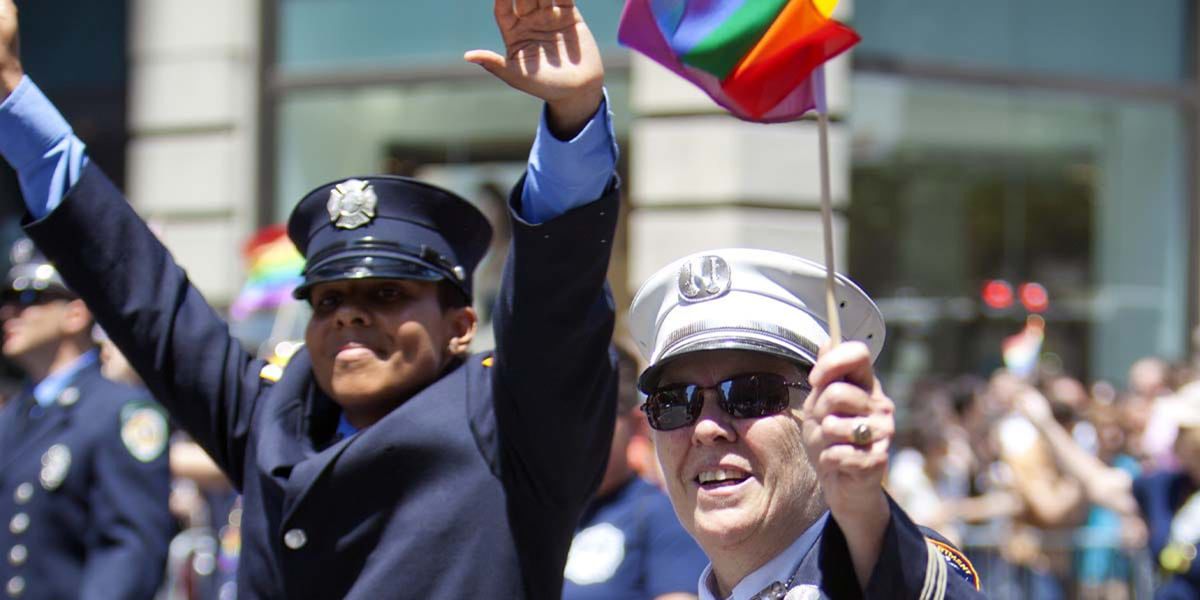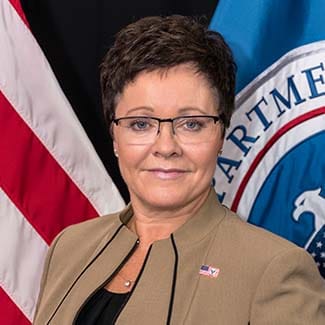
Celebrating Pride Month
Learn what steps fire departments across the country are taking to ensure that department employees and members reflect the communities they serve.
Posted: June 8, 2022
Updated: June 8, 2023
- 4 min read
- Find similar articles:
- Events
- Leadership
Pride Month is an opportunity for the fire service to recognize the positive impact Lesbian, Gay, Bisexual, Transgender and Queer (LGBTQ+) employees have on fire and rescue departments and the communities their departments serve.
It is also an opportunity to reflect on the success stories of the LGBTQ+ community and embrace the challenges still faced by those members of the fire and emergency services.
Focusing on diversity, equity and inclusion (DEI)
Fire and emergency medical services departments across the United States are taking positive steps to ensure that department employees and members reflect the communities they serve. These steps include:
Leadership: A commitment from top leadership to maintain an organizational culture that attracts and supports individuals from underrepresented groups.
Proactivity: A commitment to reducing bias and inequities in the advancement process.
Outreach: A commitment to be visible in the community by attending community events, building trust and developing relationships with a full range of community groups.
Visible authenticity has the biggest impact on change for the good. The Los Angeles Fire Department's (LAFD's) first female and openly gay Fire Chief Kristin Crowley is a great example of this. As more LGBTQ+ persons feel safe to be their true authentic selves at work, the culture within the fire service will continue to improve.
Recruiting: A commitment to include all community members, including individuals from the LGBTQ+ community and other underrepresented groups.
Hiring: A commitment to a fair, unbiased and objective hiring process.
Retention: A commitment to be supportive and inclusive of not only all LGBTQ+ members, but all members of the team, by putting into place physical and mental health benefits and anti-harassment and discrimination policies.
DIVERSITY + EQUITY = INCLUSION
Diversity
The presence of differences that may include race, gender, religion, sexual orientation, ethnicity, nationality, socioeconomic status, language, (dis)ability, age, religious commitment or political perspective. Based on these differences, some populations have been and still remain underrepresented and marginalized in and among broader society.
Equity
The promotion of justice, impartiality and fairness within procedures, processes, and the distribution of resources by institutions or systems. Tackling equity issues requires an understanding of the root causes of disparate outcomes within our society.
Inclusion
An outcome to ensure the diversity is actually welcomed. Inclusion outcomes are met when a person, institution and program is truly inviting to all. Inclusion is the degree to which diverse individuals are able to participate fully in the decision-making processes and development opportunities within an organization or group.
Source: The Center for Firefighter Injury Research and Safety Trends (FIRST)
We continue to address diversity and inclusion in the fire service. I believe that together we have the ability and the desire to lead and implement programs that create psychologically safe workplaces. We can teach cultural awareness of the challenges faced by firefighters from underrepresented groups and move from judgement to understanding and from understanding to respect.
Perseverance and visibility are the keys to bringing a DEI culture to the fire service.
True DEI requires a cultural shift in the fire service. It's not an easy proposition to advance. Reflect on past fire service culture changes like not riding the tail board, hip boots, using seatbelts, mandatory self-contained breathing apparatus use and transitional attack. Those changes, some of which are still in progress, took significant time and effort to create a culture of use, acceptance and inclusion in daily operations. Cultural shift around DEI will be no less impactful.
It's important for everyone, especially leaders, to signal acceptance and safety.
The organizational support must be authentic on all levels, from employee resource support to seemingly minor visibility issues, such as an email signature line or the use of preferred pronouns.
These supportive efforts matter because it is extraordinarily difficult to hide parts of yourself. It's exhausting to cover-up part of your life — the parts that make you, you — just because you don’t know what would happen or even if you would keep your job if people knew your secret.
Personally, I was a federal employee when I came out. Prior to coming out, I had many hidden fears around the impact that announcement would have on my professional relationships. Turns out, as is the case with many things we worry about, practically nobody cared. The Federal Emergency Management Agency and the U.S. Fire Administration have been super supportive and truly desire a space for LGBTQ+ employees to feel safe, respected and included.
What would you tell a person who identifies as LGBTQ+ who is considering a career in the fire service?
I recommend, “Do it.” The rewards far surpass the challenges. However, I also suggest that when you enter the fire service, bring all of you to the job! This job takes a huge toll on you personally. To survive, much less thrive, you will need your whole magical unicorn self.
Kyle Lovell, LGBTQ+ Liaison, Baltimore City Fire Department suggests, “The fire service appears to be a very masculine job. Many LGBTQ+ people might think they can't have a job like this. You can. You can be who you are. This career is available to all communities because it's not about race, culture or sexual orientation. It's a career for people who want to help people.”
LAFD Fire Chief Kristin Crowley offers, “If you are interested in becoming a firefighter, it's more about the type of person you are and less about the group of people you represent. This job requires you to be caring, hardworking, motivated and community minded. If you are willing to make sacrifices to help others and to serve and protect the community, you're the type of person who can find success and fulfillment in this work.”
DEI in action
Simply stated, diversity means each person brings their own set of unique qualities to the workplace. Diversity in practice leverages that uniqueness. Equity means we didn't all start at the same place, but we are going to finish together. Inclusion reminds me of a mentor who said “…at the end of the day, people are people,” so, try to help them feel included, valued and heard.
Take time this Pride Month to reflect on the progress the LGBTQ+ community has made in the fire service and renew your commitment to support efforts towards diversity, equity and inclusion. In the words of firefighter Mikey Heinrich,
To be both gay and in uniform is not a betrayal of either. It's hope.
Looking for resources?
- The International EMS & Firefighters Pride Alliance is an awareness, educational, peer support and social organization representing and supporting lesbian, gay, bisexual and transgender emergency medical and fire service professionals and volunteers around the world.

